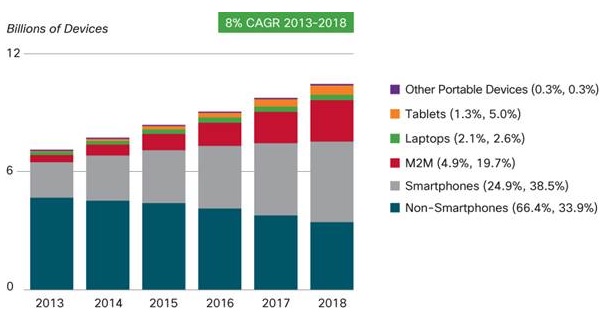The digital revolution has profoundly impacted nearly every aspect of our lives. Despite the enormity of these changes, the Internet continues to grow and develop. Three trends are transforming the Net and challenging the digital infrastructure that supports it.
One- The Explosive Growth of Video
The biggest growth area is video streaming. People now watch movies on-demand and view video content on every platform: television, desktops, laptops, smartphones, and tablets. Consumers enjoy the convenience of the connected world and the ability to watch digital content at their own command. We also are seeing the rising use of video for education, health care, and public safety. The dramatic growth of video requires additional investment in infrastructure. Viewers need networks that are fast enough to stream video and share digital content. Most of this investment is financed by the private sector.
Two- The IP Transition
The Federal Communications Commission requires telephone companies to maintain landlines for everyone’s safety. For nearly a century first responders and other emergency workers used POTS to communicate. In addition, Internet access is still not available to large rural swathes of the country. Ending service for POTS would cut off lines of communication for the elderly and disadvantaged peoples sending them back to the early 20th century. Keeping these concerns in mind the FCC and AT&T have started a pilot program in West Delray Beach, Florida and Carbon Hill, Alabama. The goal is to learn how to replace POTS with Internet Protocol (IP) systems without denying customers’ access or stifling emergency service delivery. Eventually the IP transition has the potential to allow every American access to valuable communication systems.
Three- Your Appliances Will Talk to Each Other
The Internet of tomorrow will create “smart” devices that interact with each other. A patchwork of technologies including Radio-frequency Identification, Bluetooth, and GPS will enable Machine to Machine (M2M) communication. Smart light bulbs will send a notification to your phone when you need a replacement. The number of M2M devices is expected to grow rapidly over the next few years. Researchers predict the percentage of connections M2M devices account for will quadruple from 2013 to 2018. M2M will improve the utility and efficiency of many of the devices we use today from refrigerators to eyeglasses.
Global Mobile Devices and Connections Growth
Source: Cisco Visual Networking Index: Global Mobile Data Traffic Forecast Update, 2013–2018
Interested to learn more? Read Darrell West’s paper “The Evolution of Video Streaming and Digital Content Delivery”. Stay tuned to TechTank for more coverage and join the conversation at #TechTank.




Commentary
Three Trends That Are Changing the Internet
May 2, 2014